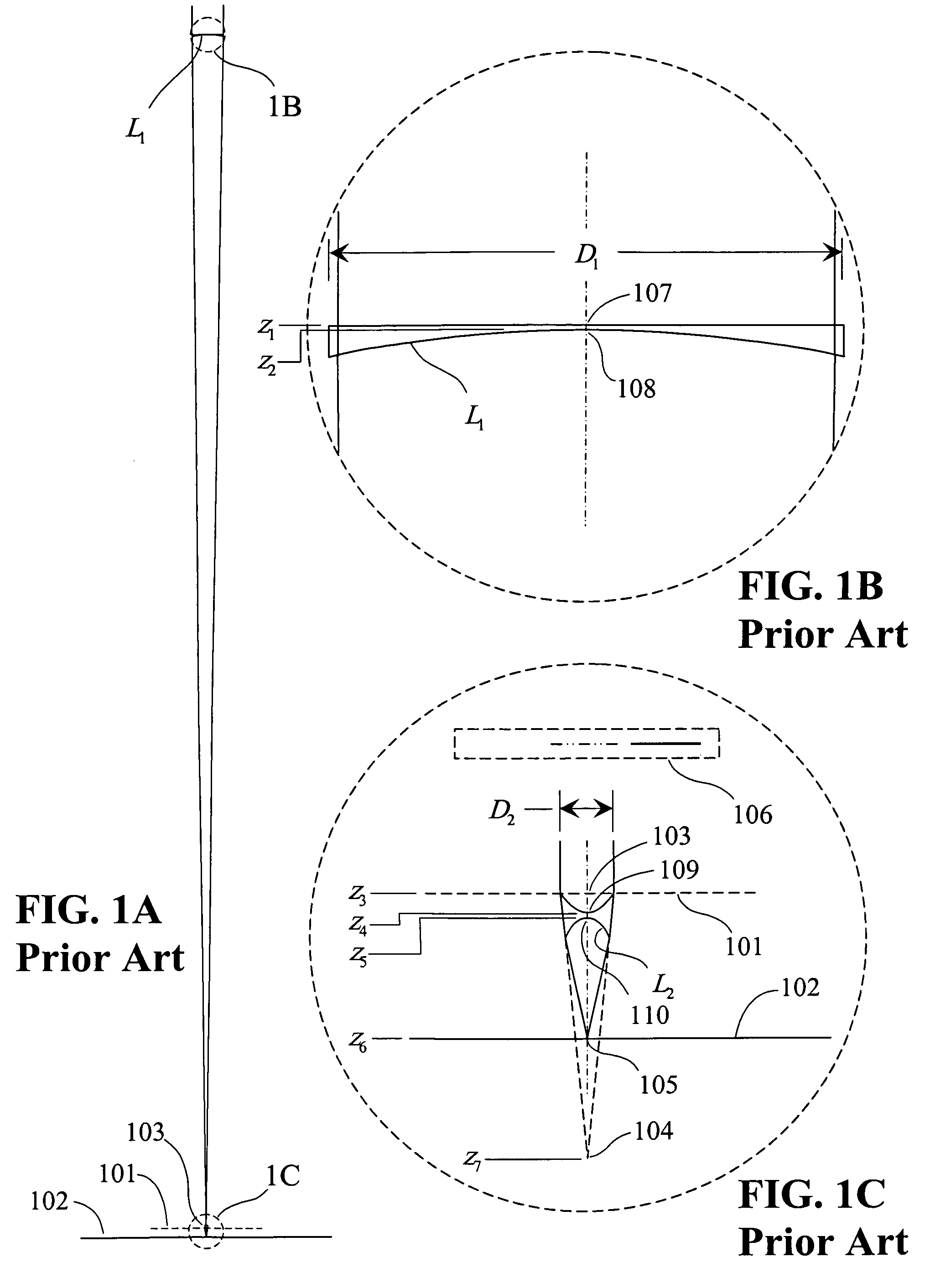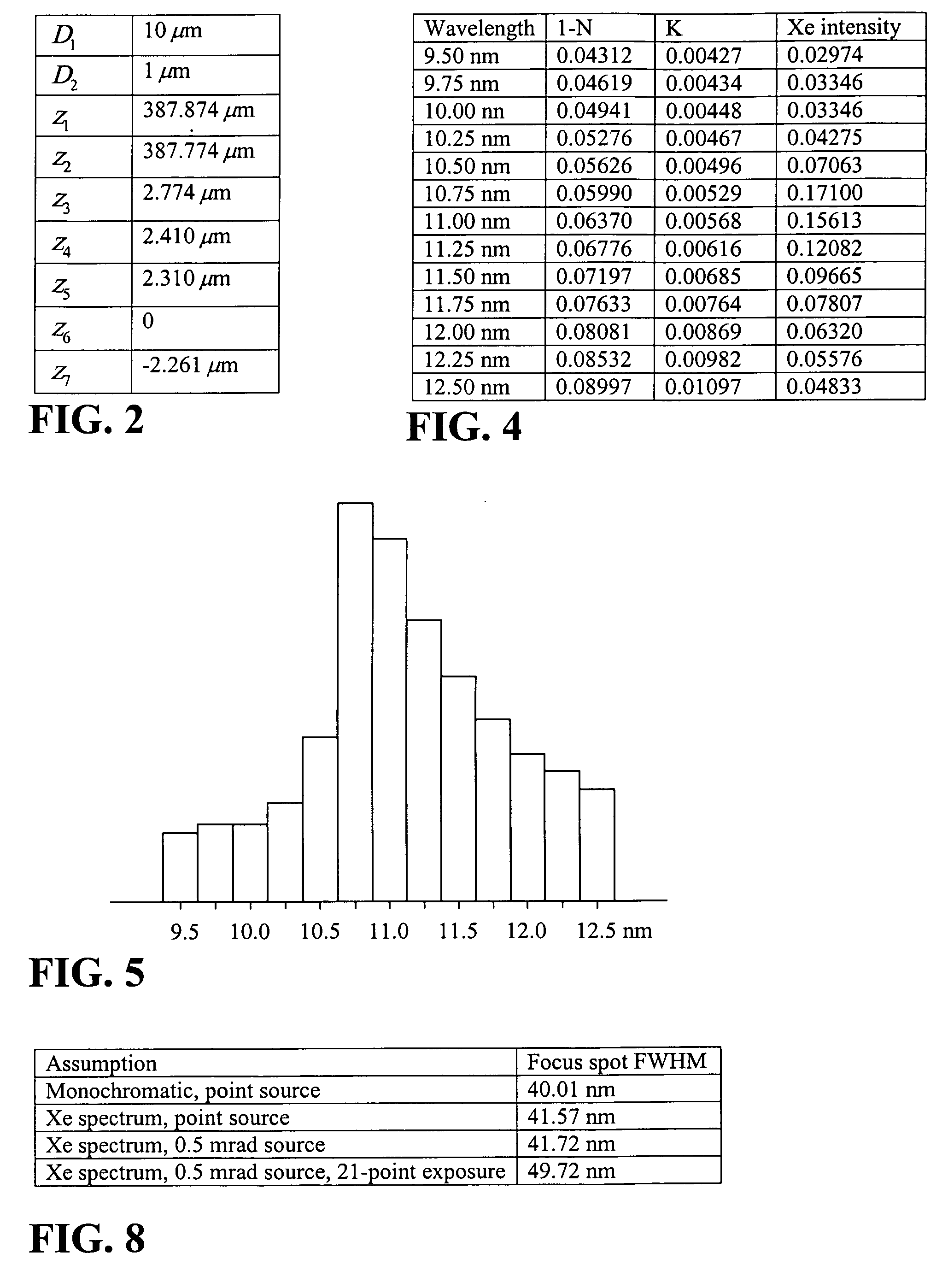Maskless, microlens EUV lithography system with grazing-incidence illumination optics
a lithography system and illumination optics technology, applied in the field of maskless, microlens euv lithography system with grazing-incidence illumination optics, can solve the problems of reducing optical efficiency, smaller lenses may be more difficult to manufacture, so as to improve illumination uniformity and minimize the effect of edge diffraction effects
- Summary
- Abstract
- Description
- Claims
- Application Information
AI Technical Summary
Benefits of technology
Problems solved by technology
Method used
Image
Examples
Embodiment Construction
[0051] Table of Contents
[0052] The following Table of Contents is provided to aid the reader in referring to specific portions of the specification. [0053] Illumination Source [0054] Microlens Design [0055] Microlens Optical Performance [0056] Print Quality [0057] Microlens Manufacture and Alternative Designs [0058] Printhead and Wafer Module Configuration [0059] Printing Throughput and EUV Power Requirements [0060] Collection Optics [0061] Distribution Optics [0062] Edge Effects and Apodization [0063] Efficiency Tuning [0064] Spectral Filtering [0065] Control System Architecture [0066] References [0067] Conclusion
Illumination Source
[0068] The illumination source is preferably a xenon LPP source (Refs. 2 and 6), which is preferred over alternative sources because of its small source size (<100 micron). A much larger source would degrade optical resolution. Also, the LPP is a relatively “clean” source in terms of debris generation. (Plasma sources other than xenon might also be c...
PUM
 Login to View More
Login to View More Abstract
Description
Claims
Application Information
 Login to View More
Login to View More - R&D
- Intellectual Property
- Life Sciences
- Materials
- Tech Scout
- Unparalleled Data Quality
- Higher Quality Content
- 60% Fewer Hallucinations
Browse by: Latest US Patents, China's latest patents, Technical Efficacy Thesaurus, Application Domain, Technology Topic, Popular Technical Reports.
© 2025 PatSnap. All rights reserved.Legal|Privacy policy|Modern Slavery Act Transparency Statement|Sitemap|About US| Contact US: help@patsnap.com



